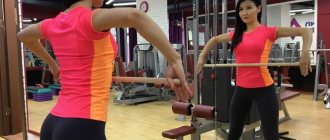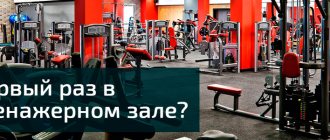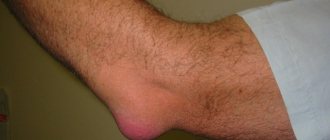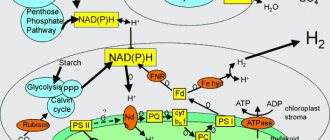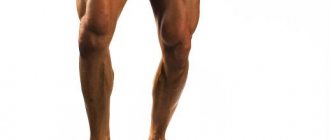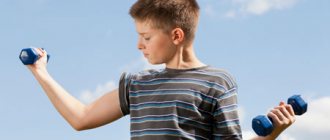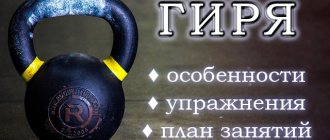Build muscle and burn fat at the same time. It sounds very simple, doesn't it? Why can't you do this?
Well, some people say it's impossible. Others believe that you need to follow a “special” diet and training program. Still others say that it is impossible to do without steroids. They are all wrong.
Building muscles and burning fat at the same time (body recomposition) is also possible for ordinary “naturals”. It is doable and does not require esoteric knowledge, mysterious/newfangled techniques or anabolic drugs. But there 's a catch. You may or may not be up to the task, depending on your body composition, training experience, and other factors.
So, in this article, I will try to explain how and for whom recomposition works, and what exactly you need to do to burn fat and build muscle at the same time.
Why is burning fat and building muscle at the same time a difficult task?
The reason many people think that building muscle and losing fat at the same time is a pipe dream is due to the process of protein synthesis in the body.
Every day your cells undergo “maintenance.” As a result, damaged, faulty and degraded cells are eliminated, and new ones take their place.
Protein synthesis refers to the creation of new cells, and protein breakdown refers to the elimination of "faulty" ones. In a healthy person who follows a proper diet, muscle tissue is fairly stable [1] and the cellular regeneration cycle is balanced.
That is, the average person does not lose or gain muscle very quickly - his muscle mass remains at approximately the same level. If you don't take any action, the percentage of muscle in your body gradually decreases as you age [2]. When you exercise, the cells in muscle fibers are damaged [3], which forces the body to speed up protein synthesis to repair the damage.
The body is an incredibly smart machine that constantly adapts to better cope with the physical stress that causes muscle damage. It does this by adding cells to the muscle fibers, causing the muscles to become bigger and stronger (which is why progressive overload is so important for building muscle and strength).
Thus, what we know as “muscle growth” is actually the dominance of protein synthesis over protein breakdown.
In other words, when your body synthesizes more muscle proteins than it loses, you build muscle . If it creates less than it loses, your muscle mass goes away. If the body synthesizes approximately the same amount as it loses, the muscles do not grow, but they do not shrink either.
This is why bodybuilders do everything they can to increase the rate of protein synthesis and suppress protein breakdown. They use, among other things, the following methods:
- high protein and high carbohydrate diets;
- basic exercises with iron (do the “base”);
- nutrition before and after training;
- eating protein before bed;
- limiting cardio;
- sports nutrition;
- steroids and other drugs (in many cases).
Now that you understand the basic physiology of muscle growth, let's look at how it relates to fat loss.
To burn fat, you need to consume fewer calories than you burn.
This is known as a calorie deficit, without which fat loss is impossible. No matter what you eat, if you take in more calories than you burn, you won't burn fat.
A calorie deficit forces your body to adapt differently. First of all, we are interested in reducing the level of anabolic hormones [4] and the rate of protein synthesis [5].
Many people trying to burn fat make mistakes in nutrition and training, which further impair muscle gain and accelerate muscle loss.
This is why it is generally believed that a person cannot build muscle and lose fat while on a calorie-restricted diet. In such situations, the rate of protein synthesis may not outpace its breakdown, and therefore there will be no muscle growth. This is true for some people, but not for everyone. Is it possible to lose weight and get fit at the same time? Yes, but not everyone.
Black list of exercises
When it comes to buttocks and hips, your body type must be taken into account! It is extremely difficult to pump up these areas without wide parameters. But for pear and hourglass figures, the following are completely prohibited:
- slow leg raises from any position;
- running (it greatly increases the volume of the thighs and calves);
- slow squats.
It is better to replace all power loads with warming up and stretching the muscles. If swings are performed, they should be quite sharp and fast.
Who can work out and lose weight at the same time, and who can’t?
Now you've learned what your muscles are up against when you're in a calorie deficit and why building muscle while losing fat is a difficult and sometimes impossible task.
However, there is good news. If you read this article carefully and follow my advice diligently, you will probably be able to lose fat and gain muscle at the same time.
I say this because you are probably new to healthy lifestyle/bodybuilding. If so, I can almost guarantee that you will succeed. People who cannot gain muscle while in a caloric deficit (or gain very little) are usually experienced athletes who have already had several years of hard training behind them. Unfortunately, if you have realized most of your genetic potential in terms of muscle growth, you will not be able to make a successful “recomposition”.
Instead, you need to alternate periods of “massing” to gain muscle with fat and “cutting” to burn fat and maintain muscle.
Body recomposition for beginners is possible because when you start working out in the gym or following the principle of progressive overload, your body is hypersensitive [6] and can build muscle at an accelerated pace.
How much muscle can you gain by burning fat?
Most guys can gain up to 10 kg of muscle in the first year of proper training (for girls this figure is usually 2 times less). For comparison: an athlete with 3 years of training experience is limited to 1.5-2.5 kg of muscle mass per year.
The “newbie effect” outweighs the disadvantages of caloric deficits that negatively affect muscle gain. Lack of energy will, of course, slow down muscle growth, but will not stop it completely.
If you're a beginner, you won't gain as much muscle in a caloric deficit as in a surplus, but the volume will be sufficient to significantly improve your physique.
If you have already seen the sport in bodybuilding, you don’t have to read any further, I bring to your attention other articles that are more suitable for your level: how to gain muscle without excess fat and how to burn fat like a god.
Now, young Padawan, when we have weeded out the pros, let's move on directly to how to lose weight and build muscle at the same time.
3rd opinion: What are you telling me, I’ve grown so much muscle in two months!
We discussed above how to practice so that they actually grow. This is what is happening here. While you were leading a sedentary lifestyle, your muscles gradually atrophied. You start exercising and they have to increase slightly to accommodate the load. But how much will they increase? Over the first 6–9 months, large muscles (primarily at the front of the thigh) may increase in volume by 1–2 cm. If you lose excess fat at the same time, the volume of the thigh will not change, it will only become denser. But after these 1-2 cm you will have to sweat a lot in order to achieve any more noticeable muscle growth!
Often, immediately after a workout, muscles appear larger than they were. No wonder: they worked, filled with blood and simply swelled by 1–1.5 cm. This will go away in half an hour. Also, don't forget that muscles are a natural tissue of the human body. According to medical standards, they should account for 30% of body weight in women and 40% in men. Fat, by the way, according to the same standards, there should be less muscle - up to 25% in women and about 20% in men.
How to burn fat and build muscle at the same time?
Your body can lose fat and gain muscle at the same time, but that doesn't mean it's easy. As I mentioned above, even when you do everything right, muscles grow slower in a calorie deficit. How much slower? Hard to say.
I haven't found any research worth your attention on this issue, but experience suggests that a calorie deficit can cut potential muscle gain in half for beginners.
For example, you can gain 5 kg of muscle in the first 12 weeks of training while in a slight calorie surplus, but you should not expect to gain more than 2.5 kg in a deficit. So be patient.
Incredible promises on the Internet that you can lose tens of pounds of fat within a couple of months and gain the same amount of muscle are lies. Those photos you usually see are a combination of muscle memory, steroids and Photoshop.
So, with that in mind, let's figure out what to do.
Exercises
As noted above, any physical activity should not be considered strength exercises.
If we are talking about squats, they are performed up to 50 times a day at a fast pace and without weights (dumbbells). For some women, this exercise very quickly leads to an increase in calf volume. It depends on the individual characteristics of the organism.
Therefore, stretching exercises are considered safer. This can be not only a classic version of exercises, well known to everyone from school, but also yoga or Bodyflex classes. These breathing exercises have a beneficial effect on the entire body, strengthening the immune system and calming the nervous system.
Cycling and running should be done in moderation. You can run at a slow pace up to 3-4 kilometers per day. Cycling is also done slowly, without unnecessary extra stress. A good alternative to running is climbing stairs at a fast pace. For one workout, it is enough to go up and down one flight of stairs 8-10 times.
Additionally, it is recommended to use massage and wraps. A visit to the steam room and sauna has worked well. Here the body gets rid of excess moisture, toxins and waste - the legs in the hip area become noticeably slimmer literally from the first visit to the steam room.
Create a moderate calorie deficit
If you eat more than you burn, muscle will grow, but fat will not be burned. Therefore, a caloric deficit is a prerequisite. But it should be moderate to avoid muscle loss, constant fatigue and psychological problems.
But how much deficit is too big? Where is this golden mean ?
We would like to thank the researchers at the University of Jyväskylä [7] for their response. They conducted a study in which top track and field athletes with low levels of body fat (no more than 10%) took part. Participants were divided into two groups:
- Daily deficit minus 300 calories (about 12% below their daily energy expenditure).
- Daily deficit minus 750 calories (approximately 25% lower energy expenditure).
All participants followed a high-protein diet. After 4 weeks, the athletes in the 300-calorie deficit had lost very little fat and muscle, while the second group had burned an average of about 4 pounds of fat and very little muscle.
Thus, you can significantly reduce the calorie intake of your diet, but do not overdo it. I recommend a 20-25 percent deficit for fat loss.
4th opinion: Exercises on “problem areas” burn fat!
This is true, but such exercises, by the way, work specifically on the muscles. Once activated, the muscles begin to more actively use the fat deposits surrounding them, receiving energy from the latter. In addition, their contractions literally displace fat and make fat cells flatter. That is why there is less fat, and cellulite loses its established positions. However, this process does not go quickly (which is not surprising, since you did not accumulate excess weight in three weeks, but over at least several years) and requires a responsible attitude: that is, exercise regularly and not haphazardly.
Focus on basic (multi-joint) exercises
Popular advice to do high-repetition exercises for ripped muscles is delusional. The desired relief is just a matter of having sufficient muscle volume and a small percentage of body fat. One training style is no better or worse than the others in this case.
If you are skinny/thin and want to look great, you need to gain muscle mass. Here it is difficult to overestimate the role of basic (multi-joint) exercises with iron.
What are basic exercises?
Compound exercises work several major muscle groups and joints and require a lot of effort. Common examples are the squat, deadlift, bench press, and military press. Isolation exercises work one muscle group and require significantly less effort. Examples: dumbbell bicep curls, crossover raises, and standing dumbbell raises.
Comparing the benefits of basic and isolation exercises is the topic of a separate article. But in short we can say the following:
If you want to gain maximum muscle mass and strength, you need to focus on compound exercises. This has long been known in the bodybuilding community, and there is also corresponding scientific data [8].
So it's no wonder that the most popular muscle-building training programs focus on multi-joint exercises. They work.
How many reps should you do?
When I started working out at the gym, I became interested in how many repetitions should I do? Is the 10-12 rep range advocated by most fitness experts optimal? Or should I do more/less?
I quickly realized that the answer was not on the surface. The number of adherents to other theories got me thinking. And that's what I realized.
If you want to maximize muscle growth, you need to train with heavy loads and moderate repetitions. Namely: work with heavy weights (80% of one-time maximum = 4-7 repetitions). One large muscle group should receive 60-80 repetitions weekly.
The need to focus on compound exercises is supported by numerous scientific studies and the experience of many athletes.
For example, one 2020 study by Gerald T Mangine et al involved 33 trained men who were divided into two groups:
- The group performed a high number of repetitions with an average weight (4 sets per exercise, 10-12 repetitions per set = 70% of one-time maximum).
- Group performing low reps with heavy weights (4 sets per exercise, 3-5 reps per set = 90% of one-time max).
Both groups performed the same exercises (including bench press, squats, deadlifts, and seated military press) and ate a healthy diet.
What was the result? After 8 weeks, the scientists found that the second group had gained significantly more muscle and strength gains much better than the first. It's no surprise that the second group got stronger, but many people didn't expect them to gain more muscle.
Why are compound exercises better for muscle growth?
Researchers have cited two main reasons why heavy weights are better for gaining muscle mass:
- Higher mechanical load on muscles. On the other hand, high-repetition training causes more metabolic stress.
- Better activation of muscle fibers. This, in turn, improves muscle adaptation [9] and growth.
So what can we learn from this study (and others like it [10], [11])?
- Lift heavy weights for low reps.
This is more important than maximizing cellular fatigue with high rep sets, drop sets, giant sets, etc.
- Focus on progressive overload.
In the study described above, subjects increased the weight on the barbell after completing the required number of repetitions (after 2 workouts). The key here was to focus on overloading the muscles rather than increasing the number of repetitions.
But that doesn't mean high-rep and isolation exercises don't have a place in your training program.
You just don't need to focus on them.
2nd opinion: It is useless to go to the gym to lose weight!
Firstly, simulators are different. For example, cardio equipment - a treadmill, an exercise bike, a stepper, an ellipsoid and others - is an excellent analogue to walking, skiing, cycling or skating. On a rainy or frosty day you can’t do without them.
Secondly, the so-called “strength” exercise machines (with weights, blocks and cables) can also be used in fat-burning mode. So, “jocks” put heavy weights on them and do 8–10 repetitions with them, then rest for a long time. And those who are losing weight need to select a light weight and do 15-30 repetitions with a short rest before the next approach. Such training will strengthen the muscles, increase their tone and blood circulation in them, due to which fat burning will increase, but will not give significant growth. At the same time, training on simulators is relatively safe: the loads move along a strict trajectory, there is no risk that an arm or leg will turn in, go to the side and crush you under the weight.
Do HIIT cardio
You can burn fat without doing cardio, but if you want to lose it as quickly as possible, you need to do cardio. You can speed up fat loss with simple walking, but to maximize results, high-intensity interval training (HIIT) is essential.
HIIT is a style of training that alternates between periods of maximum intensity and active rest. During high-intensity intervals you should work at your maximum, while the rest period allows you to regain your breathing.
HIIT is gaining more and more popularity now. Research shows that this type of training is much better at burning fat and maintaining muscle than traditional moderate-intensity static cardio. Let's find out why.
HIIT burns more fat per minute than regular cardio
This fact has been proven many times [12], [13]. He is simply undeniable.
HIIT burns more fat than moderate-intensity static cardio, and a study conducted by researchers at the University of Western Ontario [14] gives us an idea of how much more effective it is. 10 men and 10 women trained 3 times a week. The first group did 4 to 6 30-second sprints on a treadmill (with 4-6 minutes of rest in between), and the second did regular cardio for 30-60 minutes. After 6 weeks of training, the subjects who did HIIT lost significantly more fat.
Yes, a few 30-second sprints will burn more fat than running on the treadmill for an hour.
The exact mechanisms behind the benefits of HIIT are not yet fully understood, but scientists have identified many factors [15]:
- Increased metabolic rate for 24 hours after exercise.
- Increased sensitivity to insulin in muscles.
- Higher levels of fat oxidation in muscles.
- A surge in levels of growth hormone (which helps with fat loss) and catecholamines (chemicals your body produces to mobilize fat deposits).
- Suppressing appetite after exercise.
The science is clear: if you want to burn the most fat in the shortest amount of time, HIIT is your choice.
HIIT retains more muscle than static cardio
Research [16] has also shown that the longer cardio lasts, the more it impairs muscle growth and strength. This does not mean that cardio training is evil. This only applies to excessive cardio.
On the contrary, moderate cardio can speed up muscle growth. What duration is optimal?
There are two factors to consider:
- Intensity and duration of individual cardio workouts.
- Total amount of cardio per week.
When your goal is to optimize body composition (which requires progressing in strength training), your cardio should be short but intense enough to burn a significant amount of calories. The total duration of cardio training per week should be relatively low. Only HIIT meets these criteria and burns large amounts of fat.
How to Burn Fat, Not Muscle with HIIT?
When I'm cutting, I do about 1.5-2 hours of HIIT per week (no more than 25-30 minutes per session) . My favorite form of cardio is cycling. And yes, per week.
This might surprise you. You probably thought you needed to do cardio for an hour or more a day. I understand you, I also used to think that you need to sweat for hours on exercise machines in order to dry out well. But I was wrong (you can find out more about this in my article on cardio).
“Here I am...”
- But I read that you can convert fat into muscles, is that what you need?
- Fat and muscle are completely different things. Fat and muscle have nothing in common; these cells differ both in their content and purpose. And turning some cells into others is pure magic. If you mean that during physical activity you will break down a bunch of fat deposits and it is this energy that will be used for muscle growth, then this theory does not work in practice. See the answer above.
- But I’ve been working out for a couple of months, but I’ve become noticeably pumped up and lost weight!!
- Firstly, it has long been a proven fact that a person sometimes evaluates himself, to put it mildly, inadequately, so forgive me, but there is a possibility that your changes are visible only to you
